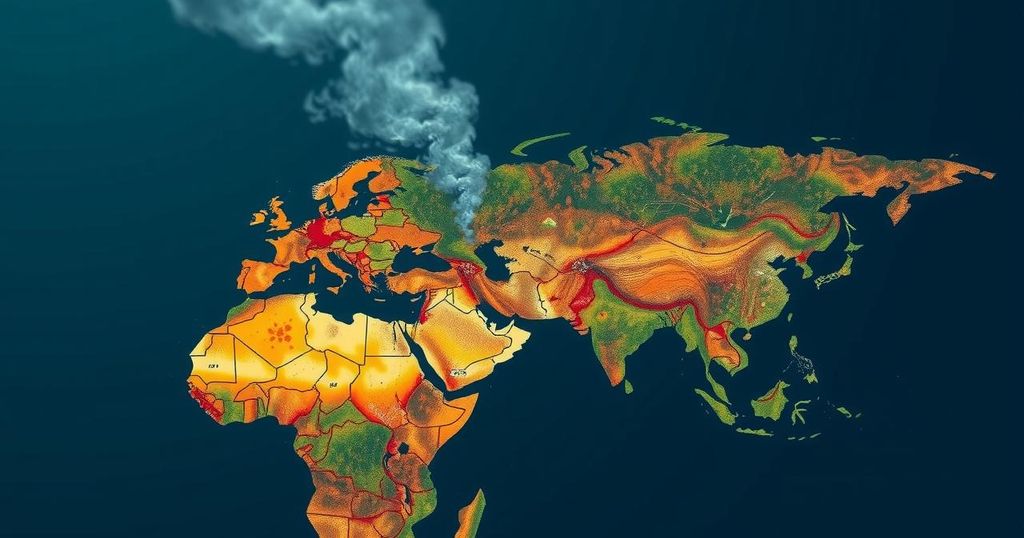UN Warns Climate Change Heightening Global Refugee Crisis

The UN Refugee Agency warns that climate change is significantly exacerbating the refugee crisis, with the number of displaced individuals reaching 120 million. The report indicates that 75% of forcibly displaced people live in areas severely affected by climate hazards, with nearly half suffering from both conflict and climate risks.
The United Nations has issued a stark warning regarding the impact of climate change on the global refugee crisis, revealing that climate-related hazards have significantly contributed to a doubling in the number of displaced individuals, now totaling 120 million. According to a recent report by the UN Refugee Agency (UNHCR), approximately 75% of those forcibly displaced reside in regions severely affected by climate hazards, which exacerbate the challenges faced by those already escaping conflict. The report highlights that nearly half of the displaced individuals find themselves in areas grappling with both violent conflict and severe climate risks, such as Myanmar, Somalia, Sudan, and Syria. UN High Commissioner for Refugees Filippo Grandi emphasized the dire situation faced by the world’s most vulnerable populations, stating, “For the world’s most vulnerable people, climate change is a harsh reality that profoundly affects their lives.” He added that the climate crisis intensifies the displacement experienced by communities already suffering from violence and instability. Currently, Sudan exemplifies this crisis, with approximately 700,000 individuals fleeing ongoing conflict into neighboring Chad, a country also burdened by climate change, leading to further displacement risks due to severe flooding. Furthermore, more than 70% of refugees from Myanmar have found refuge in Bangladesh, where they face extreme cyclones and flooding. Grace Dorong, a climate activist and former refugee in South Sudan, noted the visible impacts of climate change on displaced populations. She articulated a message of hope, expressing that the voices of those affected should guide decision-makers in addressing the synergistic effects of forced displacement and climate change; addressing these issues could contribute to viable solutions. The UN report was unveiled during the COP29 climate summit in Azerbaijan, where representatives from nearly 200 countries are engaging in discussions about climate change and its associated challenges. The urgency of the summit increases as 2024 threatens to shatter previous temperature records, prompting discussions on enhancing climate financing, especially for developing nations seeking to surpass the existing $100 billion annual target. Damilola Ogunbiyi, the UN special representative on sustainable energy, stated, “We have a record-breaking year of investments in clean renewable energy. However, only 15 percent of that goes to the Global South.” With the current United States administration expressing intentions to reassess its commitment to international climate agreements, the importance of these discussions and actions amplifies.
The link between climate change and increased displacement is becoming increasingly evident as natural disasters and extreme weather events continue to disproportionately impact vulnerable populations. The United Nations reports that areas facing intense climate hazards often correlate with regions suffering from conflict, leading to complex dimensions of displacement. The interrelation between climate vulnerabilities and sociopolitical instability calls for urgent action and cohesive global responses to tackle the escalating refugee crisis exacerbated by climate conditions.
In conclusion, the UN’s latest findings underscore the pressing nature of the crisis facing climate-displaced populations, revealing an alarming synergy between climate change and forced displacement due to conflict. With millions of individuals affected, it is imperative for global leaders to harmonize efforts in addressing both environmental challenges and humanitarian needs. Failing to do so will likely exacerbate the suffering of those currently uprooted and increase future displacement as climate conditions worsen.
Original Source: www.aljazeera.com






